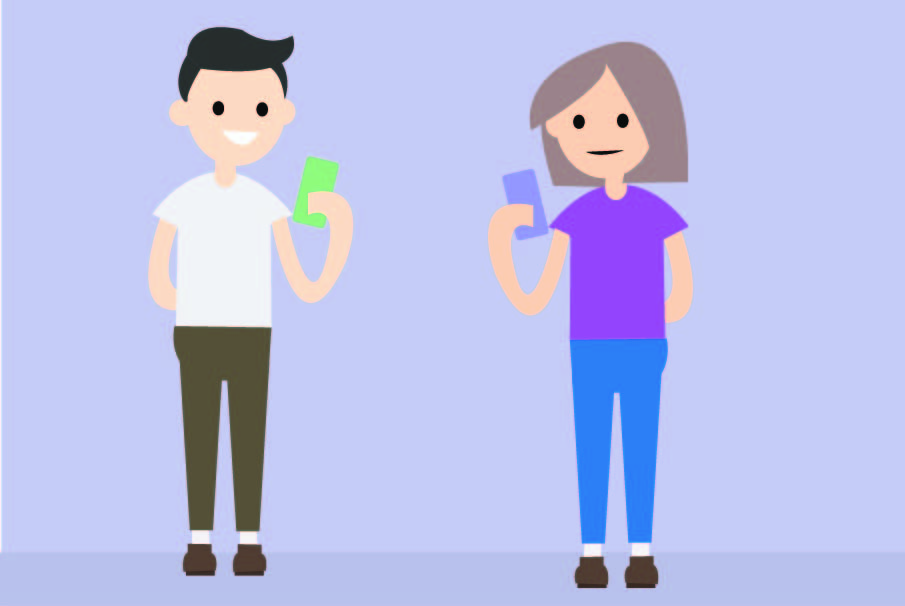
From India to the U.S., social media limits face-to-face interaction and human connection
Growing up between the mid-1990s and early 2000s, the thought of a connected world where people could FaceTime and communicate with anyone across the globe through various platforms never crossed my mind. I spent most of my childhood in a rural town called Baramulla (Kashmir, India), where even cell phones didn’t start to appear until the mid-2000s. Even getting a black and white television in the ’90s was considered a checkmark on one’s bucket list.
But a few very smart people thought differently, and those who did created Facebook, Myspace, Orkut and all of the other early social networking platforms. And by the time I was a teenager, internet had finally arrived in my life. That sound of dial-up internet gives me goosebumps to this day. Even at that time, my only mode of communication through internet was Yahoo Messenger, and one emoticon or “hello” from a friend was considered to be a mission accomplished, even if we were next-door neighbors.
In 2009, every person with an internet connection in my town had a Facebook account. What I had learned from the users was that you create an account and manage a profile, which can be viewed by anyone, no matter where they’re from, as long as they have a Facebook account as well. Being an ambivert with more inclination toward being an introvert, I wasn’t able to digest the idea of being watched or followed by strangers, and this thought made me resist the Facebook craze for nearly two years. The moment of truth came in 2011, when I finally made a Facebook account (or rather was forced to by a friend). By that time, being a high schooler and not having a Facebook account was considered abnormal even in a small town like mine, let alone in developed nations.
Soon, group meetings and gatherings were transformed into group chats; hanging out became texting for hours; showing support for some cause changed to a mere thumbs-up. Smartphones arrived soon after, and it looked as if everyone had been transported to a new world — a virtual world, which was, in many ways, less social than our real world.
I moved to the United States in 2016, and it was pretty evident to me that the epidemic of social media had taken over not only my town, but pretty much every other place here — and to a much greater extent than expected. Everyone is glued to his or her smartphone and checking what’s new. By this I mean scrolling over Instagram and Facebook profiles, wondering, “Why can’t I have such a life?” It’s a rarity to find a young person reading on a train or bus; this group of people, to some extent, are endangered in today’s world ruled by social media applications.
People nowadays prefer social media more than face-to-face meetings and believe that their friends are having a better life based off their posts, according to a recent study by Kaspersky Lab. Excessive use of social media adversely affects users’ well beings, who are more likely to report poor mental health, including depression and anxiety. This may be caused by constantly comparing oneself to a friend’s daily life, leading to further jealousy and unhealthy competition.
Widespread social media addiction is evident — and I am in no way claiming to be immune to it or that I have some kind of antidote. Yet, social media can be made social again by using it as a platform to actually socialize with others, rather than just following someone or swiping left or right. Good steps include making group chats that actually result in meeting up with friends, or even Snapchatting while still remaining conscious of the given moment. Although there have been miscalculations on our part regarding the impact of social media, it’s time that we limit our time in the virtual world and start living more in the moment.
Written by: Kanwaljit Singh — kjssingh@ucdavis.edu
Disclaimer: The views and opinions expressed by individual columnists belong to the columnists alone and do not necessarily indicate the views and opinions held by The California Aggie.



